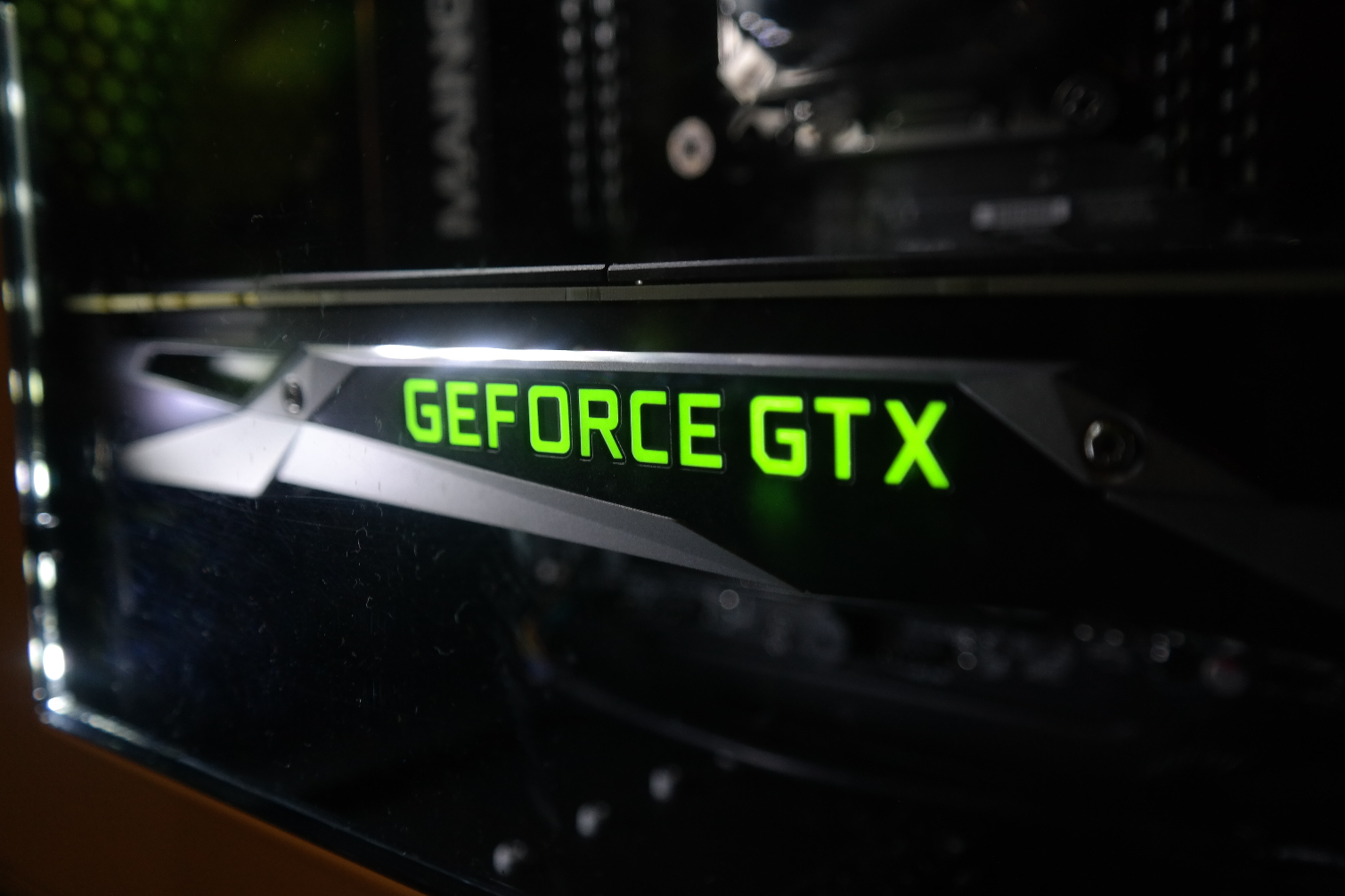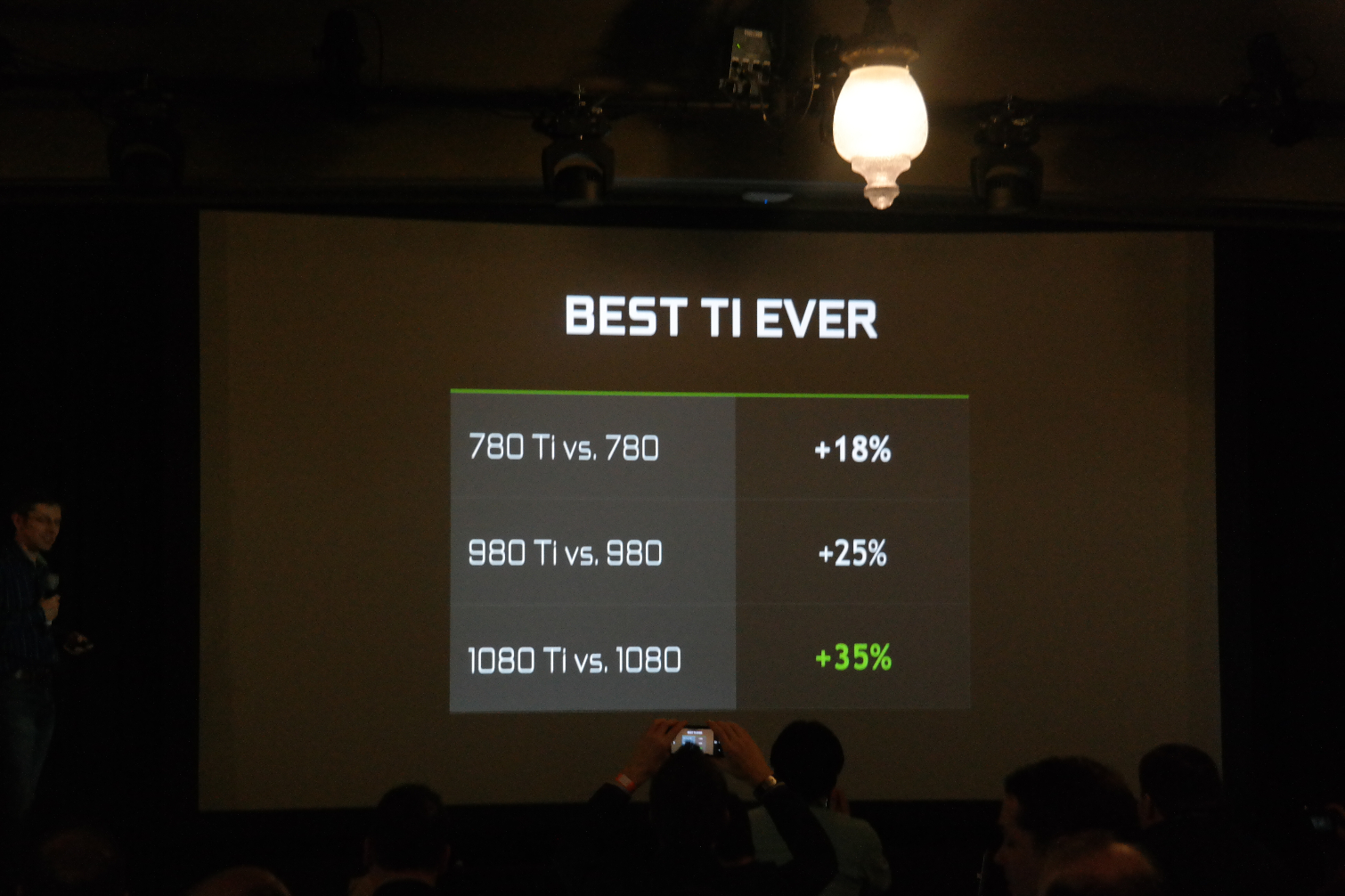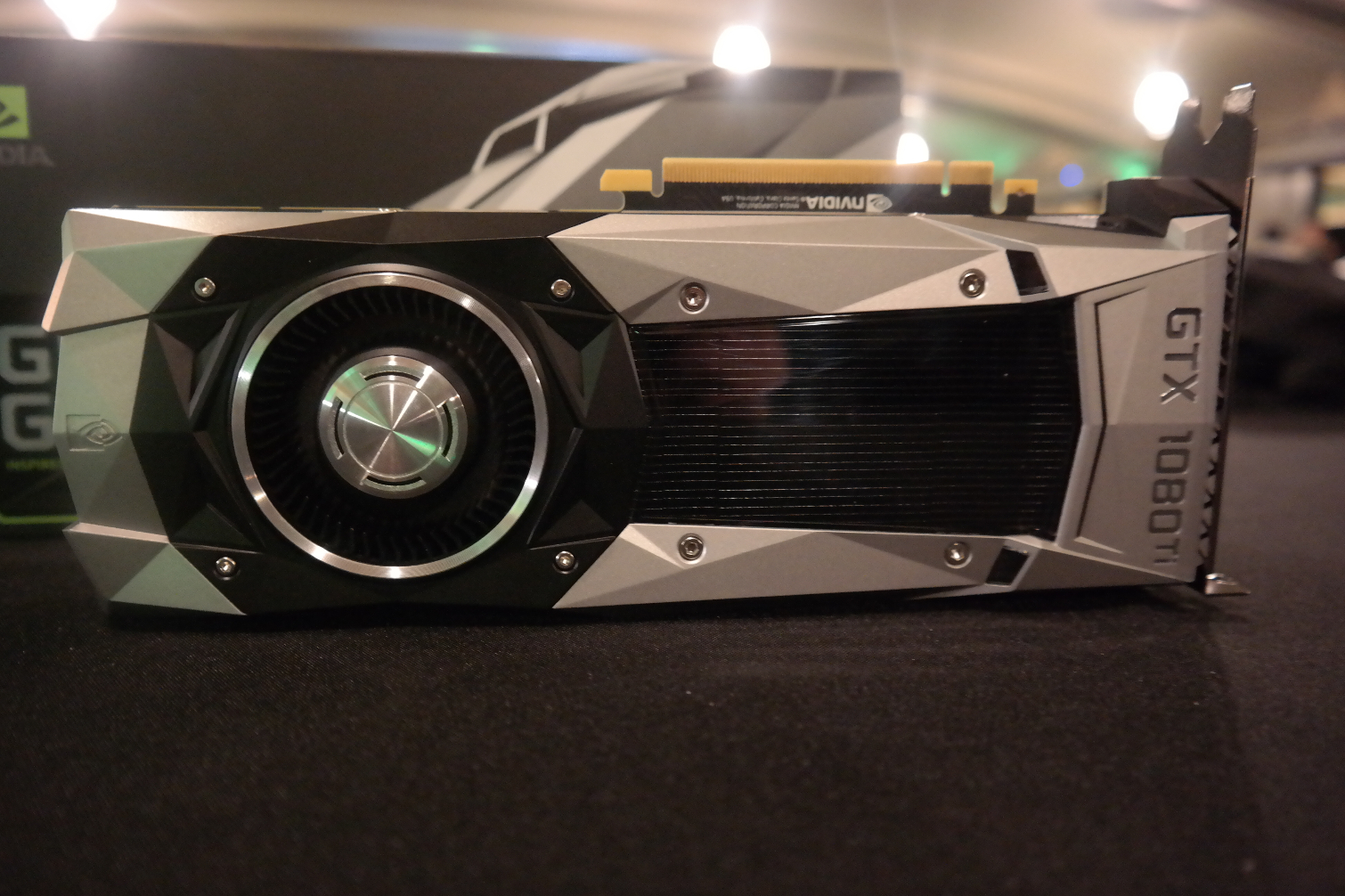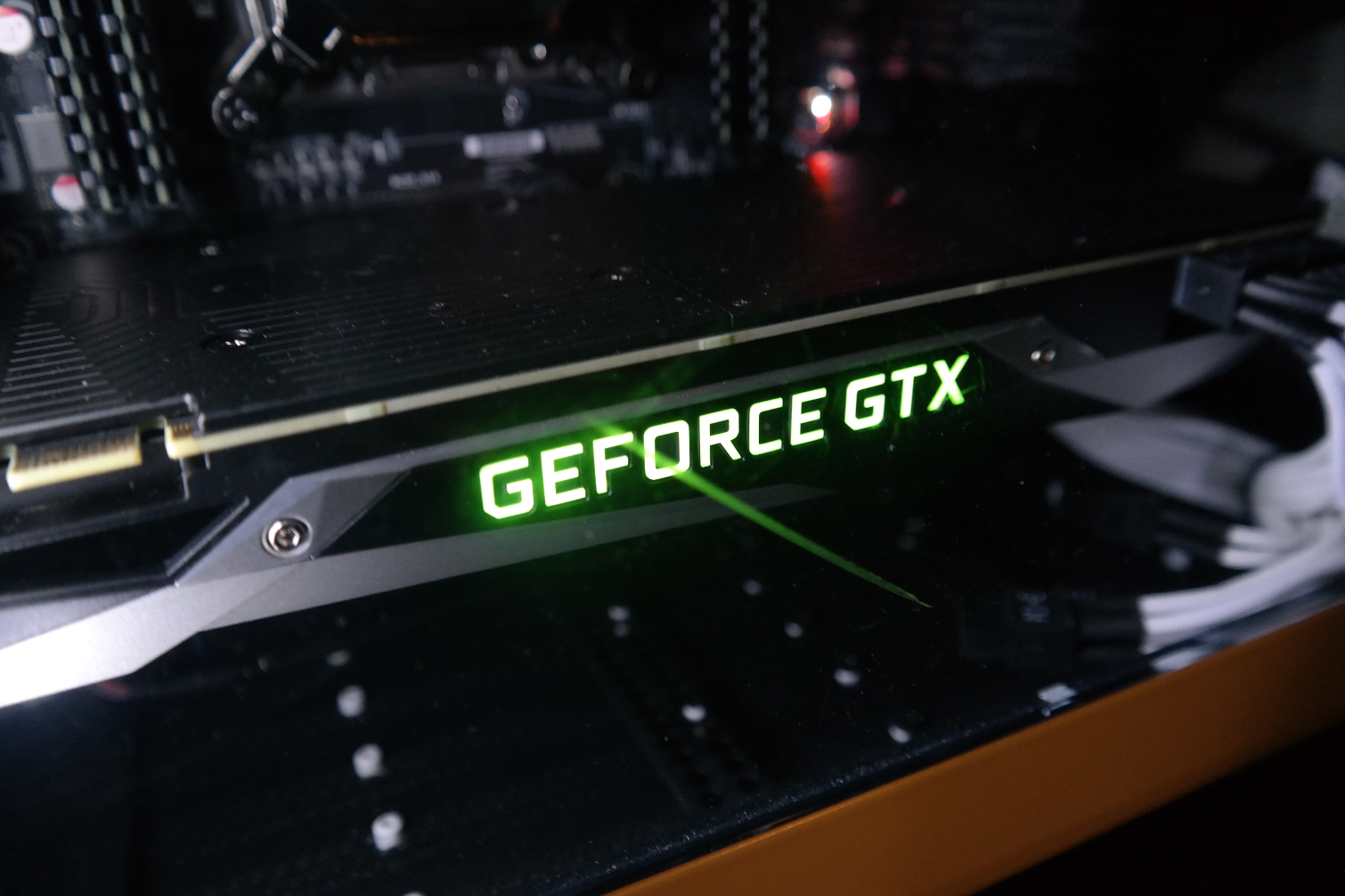Nvidia GTX 1080 Ti: Everything You Need to Know
The Nvidia GTX 1080 Ti is poised to deliver some of the best performance you can get out of a graphics card.
One of the best graphics cards on the market just got better. As is tradition for the company, Nvidia just unveiled the "Ti" version of its Nvidia GeForce GTX 1080 GPU, which means even better gaming performance and richer virtual reality experiences when it launches next week for $699. If you're thinking of upgrading, here's what you need to know about the GeForce GTX 1080 Ti and how it will improve the next generation of gaming desktops and laptops.

How will the GTX 1080 Ti improve my games?
According to Nvidia, the GTX 1080 Ti represents the biggest performance leap yet from a standard GTX card to the Ti model. You can expect a 35-percent performance increase from the original 1080, and based on a chart provided by Nvidia, games like Rise of the Tomb Raider and Tom Clancy's The Division run up to 1.5 times as smoothly on a 1080 Ti as they do on a standard 1080.

If you're interested in nuts and bolts, the GTX 1080 Ti's key specs include a 1.6-GHz boost, 3,584 CUDA cores, 12B transistors, and 11GB of memory. If that all sounds like a second language, just know that Nvidia's new card will offer some of the best performance you can find on a GPU.
How has the design changed for the GTX 1080 Ti?

The GTX 1080 Ti isn't just a technical evolution. The graphics card sports a new design that's designed to prevent overheating, with a new vapor chamber as well as twice the cooling area. According to Nvidia, the new card is capable of running 41 degrees cooler (Fahrenheit) than the standard 1080.

What's the price and availability for the GTX 1080 Ti?
The GTX 1080 Ti is set to launch in early March for $699. As with prior generations, the new card will launch as a special Founder's Edition, with other editions from Nvidia's partners to follow.
MORE: The Best Gaming Desktops
What's it like to game on a GTX 1080 Ti?
We'll have to run some tests to see how it stacks up against the 1080, but based on our hands-on time, playing games on a 1080 Ti is a joy. When playing the indie game Snake Pass, the hundreds of blades of cartoony grass I slithered through looked true to life.
The card was a great showpiece for futuristic action game The Surge, which exhibited exceptional lighting effects, crisp environmental details and lots of realistic gore. For Honor ran like a dream on the 1080 Ti, maintaining a remarkably solid framerate even as dozens of medieval warriors flooded the battlefield.
In gaming benchmarks, the 1080 Ti went toe-to-toe with the Titan X at both 1440p and 4K. Grand Theft Auto V, Rise of the Tomb Raider, The Witcher 3, Ashes of the Singularity, Metro: Last Light and Hitman all rendered in a buttery smooth fashion.
Should I upgrade to the GTX 1080 Ti?

If you're already rocking a GTX 1080 (or even a GTX 1070), that card will still provide great gaming and VR experiences for quite a while. But if you've been holding out on getting the 1080, the 1080 Ti is an even better version at a still fairly reasonable price. If you're not quite ready to make that leap, Nvidia has just dropped the price of the original 1080 to $499. The company will also be releasing new, overclocked versions of the GTX 1080 and 1060.
We'll look forward to testing the next generation of 1080 Ti-powered gaming desktops and notebooks, so stay tuned for reviews.
Photos: Mike Andronico / Tom's Guide
Sign up to get the BEST of Tom's Guide direct to your inbox.
Get instant access to breaking news, the hottest reviews, great deals and helpful tips.
Mike Andronico is Senior Writer at CNNUnderscored. He was formerly Managing Editor at Tom's Guide, where he wrote extensively on gaming, as well as running the show on the news front. When not at work, you can usually catch him playing Street Fighter, devouring Twitch streams and trying to convince people that Hawkeye is the best Avenger.

